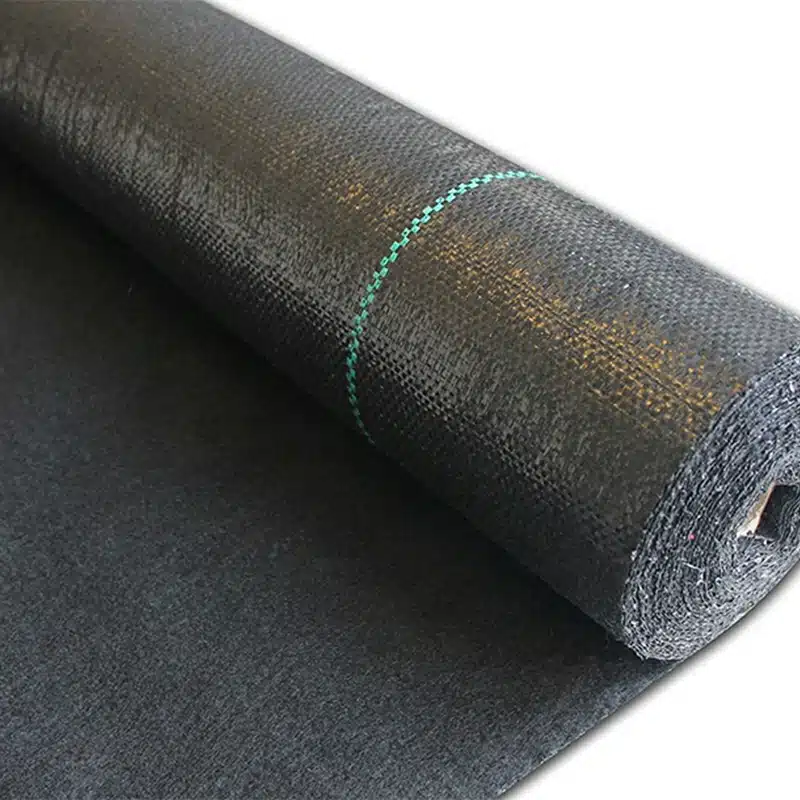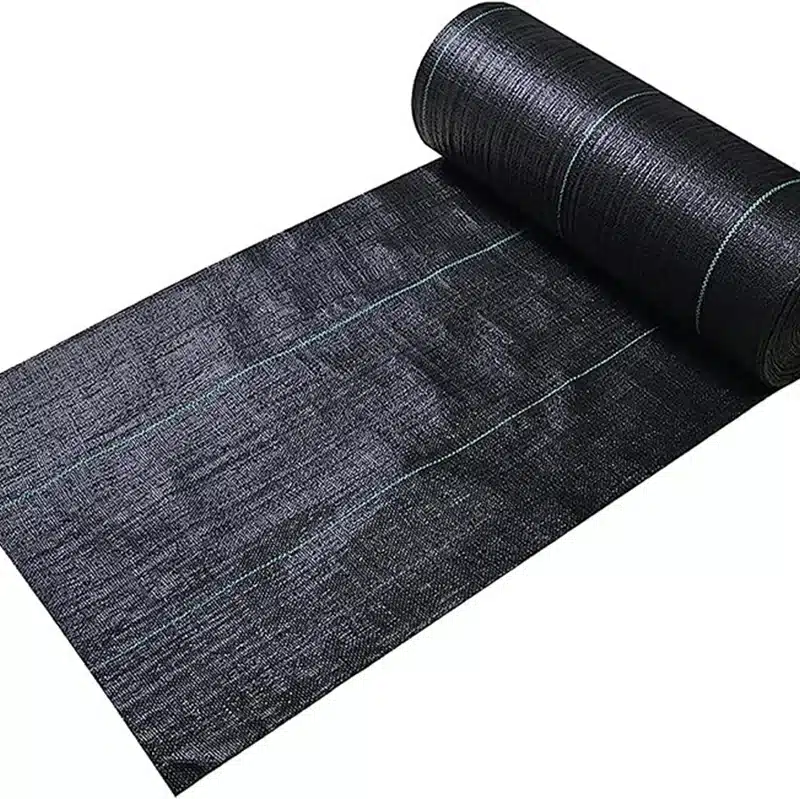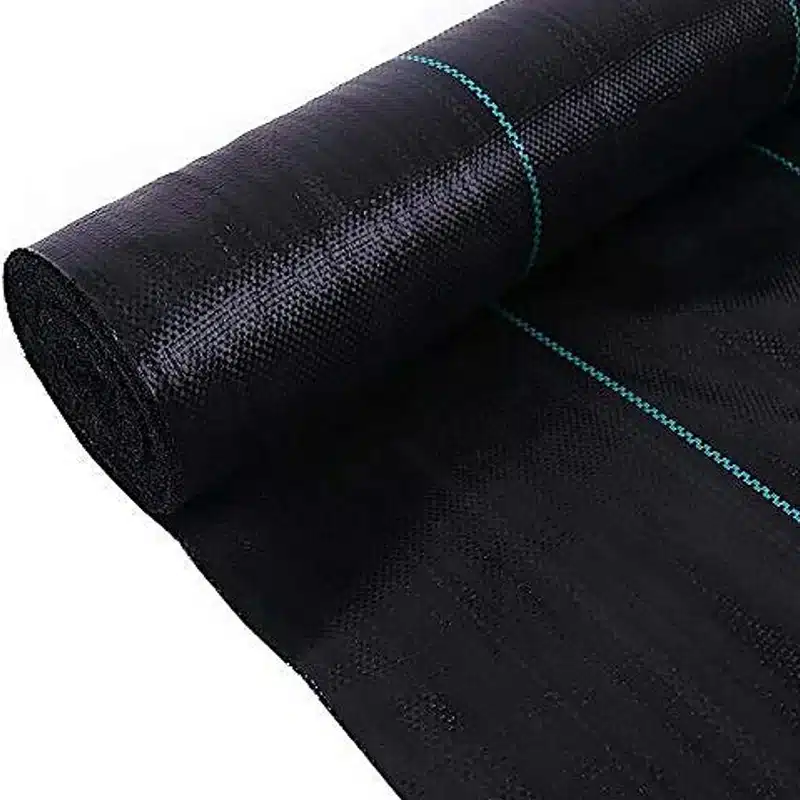+86-159 9860 6917
info@geofantex.com
geofantex@gmail.com
+86-400-8266163-44899
Choosing the right landscape fabric is crucial for effective long-term weed control in your garden or yard. Selecting an inappropriate fabric can undermine your efforts and lead to unnecessary challenges. To achieve the best outcomes, it’s essential to familiarize yourself with the various types of landscape fabrics and their specific applications. Whether you’re planning to create a pathway leading to your garden or aiming to suppress weeds around your plants, there’s a suitable fabric designed for your needs. This article explores the different types of woven and non-woven landscape fabrics to help you determine which one will work best for your projects.
What Is Landscape Fabric?
Landscape fabric is a material available in sheet form, typically sold in rolls, and is used extensively in gardening and landscaping. It can be applied throughout gardens or around trees and shrubs to provide several benefits:
Gravel on Landscape Fabric Weed Barrier Fabric Covered with Gravel
- Weed Suppression: Blocks weeds from emerging through the soil.
- Moisture Retention: Reduces evaporation, helping soil retain moisture.
- Temperature Regulation: Stabilizes soil temperature by providing insulation.
- Reduced Herbicide Use: Minimizes the need for chemical weed killers.
- Erosion Control: Helps prevent soil erosion by providing a protective barrier.
Landscape fabric is also known by various other names, including weed block fabric, garden fabric, weed control fabric, and weed barrier fabric. It is typically made from materials such as linen, polypropylene, polyester, or recycled substances.

Types of Landscape Fabric
The main categories of landscape fabric include:
- Woven Fabric
- Non-Woven Fabric
- Spun Fabric
- Perforated Fabric
Each type possesses unique characteristics tailored for specific landscaping purposes. Choosing the correct fabric type is essential; for instance, using non-woven fabric in a vegetable garden might not yield the desired weed control compared to using perforated fabric.
Woven Fabric
Woven landscape fabric is crafted by weaving together linen or polypropylene fibers, creating small openings that allow water, air, and nutrients to penetrate the soil. This durable fabric is ideal for:
- Tree and Shrub Areas: Effectively suppresses weeds around long-term plantings.
- Permanent Flower Beds: Suitable for areas where plants are not frequently replaced.
Due to its robust nature, woven fabric can be challenging to cut or dig through, making it less suitable for gardens where plants are regularly added or replaced, such as vegetable gardens.
Non-Woven Fabric
The non-woven fabric consists of solid sheets made from materials like polypropylene or polyester. Lighter-weight versions are highly permeable, allowing substantial water flow, and are best utilized in:
- Rock Mulches and Pathways: Acts as a barrier preventing rocks from sinking into the soil and inhibits weed growth.
- Erosion Control Projects: Provides stability and separation between soil layers.
This fabric simplifies the process of removing rocks when necessary, as it keeps them separated from the underlying soil. However, it’s not recommended for areas with frequent planting activities.
Gardener Removing Weeds Weeding in Progress
Spun Fabric
Spun landscape fabric is a subtype of non-woven fabric, created by bonding long polyester fibers through heat or compression. It comes in varying thicknesses:
Additional Use: Can serve as a physical barrier around garden borders to deter pests and invasive grasses.
Thin Spun Fabric:
- Application: Suitable for flower beds with minimal digging.
- Benefits: Allows the exchange of water and nutrients between soil and plants.
- Limitations: Not ideal for vegetable gardens due to its delicate nature.
- Thick Spun Fabric:
- Application: Excellent for use under gravel mulches, pathways, and behind retaining walls.
- Benefits: Offers long-lasting strength, and prevents roots and soil from penetrating cracks.
Perforated Fabric
Perforated landscape fabric features small holes throughout and is a lightweight option designed for areas with minimal foot traffic and frequent planting changes. It is particularly effective for:
- Vegetable Gardens and Flower Beds: Facilitates easy digging and plant replacement.
- Water and Nutrient Access: The holes allow essential elements to reach the soil while still controlling weed growth.
- Ease of Use: Some varieties come with pre-cut holes, simplifying the planting process.
However, due to its lightweight nature, perforated fabric is not recommended for high-traffic areas or regions with large, intrusive roots, as it can tear easily under stress.
Backyard Garden Beds Well-Maintained Garden Area
Is Landscape Fabric Right for Your Project?
While landscape fabric offers several advantages, it also has some drawbacks to consider:
- Soil Health Concerns: Some absorbent fabrics can become clogged over time, potentially suffocating beneficial soil organisms like earthworms.
- Nutrient Limitation: Unlike organic mulches, landscape fabric does not contribute nutrients to the soil.
Alternatives such as newspaper layers, wood chips, or other organic mulches can effectively control weeds, prevent soil erosion, retain moisture, and enrich the soil as it decomposes.

However, for specific projects like installing retaining walls, creating pathways, or laying rock mulch, the use of appropriate landscape fabric can be highly beneficial by providing structure and long-term weed control.
Selecting the right type of landscape fabric depends on the specific needs and conditions of your gardening or landscaping project. Understanding the distinct features and optimal uses of woven, non-woven, spun, and perforated fabrics will enable you to make informed decisions that enhance the health and appearance of your outdoor spaces. Always consider the long-term impacts on soil health and maintenance requirements when choosing the appropriate material for your landscape.



Get Free Sample
We’ll respond as soon as possible(within 12 hours)






















